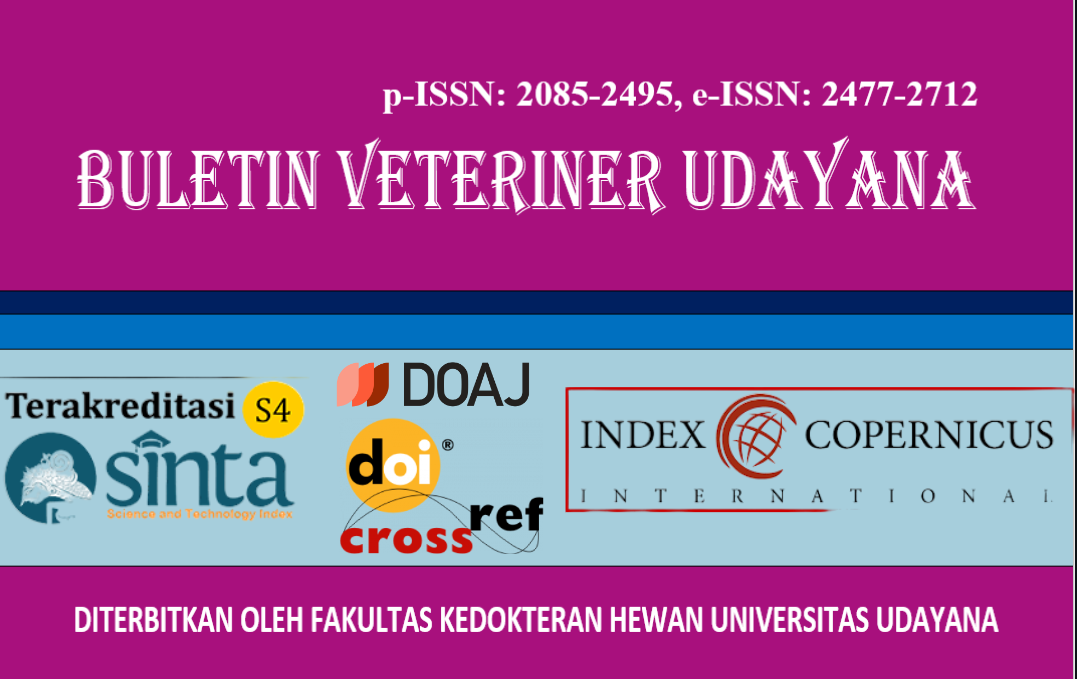BRONCHITIS WITH DIPYLIDIOSIS IN A DOMESTIC CAT: A CASE REPORT
DOI:
https://doi.org/10.24843/bulvet.2025.v17.i05.p19Keywords:
bronchitis, combination therapy, dipylidiosis, domestic catAbstract
This case report details the management of a 5-month-old domestic male cat presenting with clinical signs of coughing, sneezing, mucopurulent nasal discharge, diarrhea, and inappetence. Diagnostic investigations, including medical history, clinical examination, hematology, nasal swab cytology, fecal examination, and radiography, were conducted. Results revealed leukocytosis, neutrophil infiltration with coccid bacteria in the nasal swab, a bronchial pattern on radiographs, and the presence of Dipylidium caninum gravid proglottids and eggs in the feces. A definitive diagnosis of concurrent bronchitis and dipylidiosis was established. Treatment consisted of a multimodal approach including causal, symptomatic, and supportive therapy. The therapeutic regimen included the antibiotic cefixime (10 mg/kg BW PO, q12h), the anti-inflammatory methylprednisolone (0.5 mg/kg BW PO, q24h), and nebulization with a solution of bromhexine HCl, gentamicin sulfate, and 0.9% NaCl (1 mg/kg BW, q12h). Additionally, the cat received multivitamins (0.2 mL SC), Drontal® cat (¼ tablet) as an anthelmintic, and kaolin-pectin (1 mL/kg BW PO, q6h). The owner was counseled on maintaining proper environmental hygiene. A significant improvement in the cat's clinical condition was observed by the seventh day of treatment.




